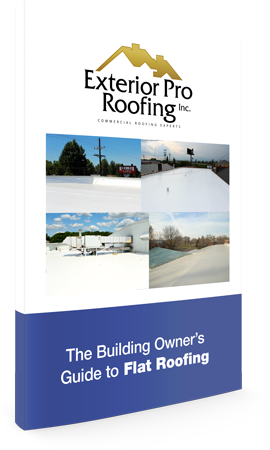Some roofs have valleys whether they are short or long, some have multiple valleys and some have no valleys at all. A lot of gabled roofs have valleys whether it is because of the design of having two gabled roofs connecting or intersecting, or because of dormer windows or some other unique architectural design.
Many that have a roof with valleys know that this can be the most common area the roof can leak. This can be for numerous reasons like the flashing, if used, has a hole somewhere or has become loose or something along those lines, or if no flashing was used then there is loose shingles, damaged shingles or something along the line. Regardless the reason this area needs to be repaired. One question that a roofing contractor might ask you is what kind of valley you have. Do you know what type?
There are 3 types of valleys shingled roofs can have, open, closed and woven. Your repairs will depend on which kind of valley you have.
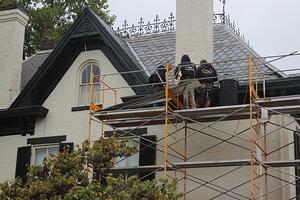 Open: the open valley is one that uses flashing. First an ice and water shield or some other form of underlayment protection is applied to the valley area and the rest of the roof. Next a piece of metal that comes pre-bent or is bent by the contractor is installed on the valley. Then the shingles are installed and fitted on both sides of the valley covering the edges of the flashing. The flashing helps the water to run down it and into the gutter system. Sometimes flashings can become loose or damaged and may need to be repaired or sometimes replaced. In either case the shingles have to come off that area and so far around it to replace it or repair. You can see the flashing along the valley in the photo to the right.
Open: the open valley is one that uses flashing. First an ice and water shield or some other form of underlayment protection is applied to the valley area and the rest of the roof. Next a piece of metal that comes pre-bent or is bent by the contractor is installed on the valley. Then the shingles are installed and fitted on both sides of the valley covering the edges of the flashing. The flashing helps the water to run down it and into the gutter system. Sometimes flashings can become loose or damaged and may need to be repaired or sometimes replaced. In either case the shingles have to come off that area and so far around it to replace it or repair. You can see the flashing along the valley in the photo to the right.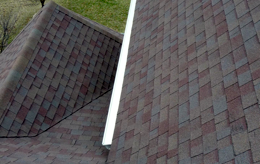
Closed: the closed valley does not use flashing but still is required to use the ice and water or some other underlayment protection. Then one side of the valley the shingles are installed and fitted so that that side is covering the valley, then the same steps are done on the other side of the valley then are cut to stop at the valley and then are sealed with roof cement. The water travels down the valley into the gutter system. Sometimes these valleys have to have the shingles re-adhered.
Woven: the woven valley is kind of like the closed valley but is actually woven. The contractor starts with one side (3 tab shingles are used and they cannot be too thick shingles) and then the next side going back in forth making a woven pattern. Causing the shingles to be blended, the shingle on one side starts and covers the valley completely to the other side and then the next one is done on the other side of the valley and covering the entire valley to the other side. Sometimes the woven valleys can be more work to repair because of the way they are installed but are said to work really well to direct the water to the gutter system and help block water from getting under the shingles; this also uses ice and water or other underlayment protecting before installed the shingles over valley and the entire roof.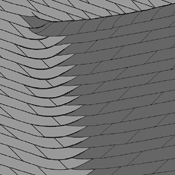
Each valley has its pros and cons but all do well to shed the water down the valley to your roofs draining system. Some roofing contractors, architects or home owners prefer one over the other due to cost or because of the look they desire for the home. Either way the purpose for the valleys is to travel the water down and they all can have problems with leaking and generally do more than other areas because of ice damming and with woven or closed valleys debris can sometimes get trapped blocking water drainage or due to flashing damaged or loose. If you have a leak in the valley contact a roofing contractor to get it repaired and if you see that your valley does not seem to be doing what it should have someone look at it also.


